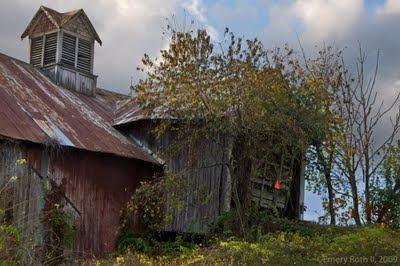
COLLABORATIVE JOURNAL (guest contributer, Jane Roth): Old farmhouses go through many incarnations from the vision of the original owner, through renovations driven sometimes by changing need, sometimes by changing values. Sabbaday House began modestly but rose in stature. The rooms were small, and one flowed into another without halls. Remove the kitchen addition and the first floor bedroom wing (added in the 1950's), and you're left with four rooms on the first floor and four bedrooms on the second floor but with small "eyebrow" windows. Eyebrow windows hint that earlier this was probably attic or garret.
In any case, the second floor became the bedroom floor, divided, minimally, by need for privacy. The flow of the current layout would be unsettling to the original owners. The 4 over 4 (or sometimes 2 over 2) pattern was repeated all over New England. The first important addition was usually the kitchen ell. The old structures adapt well; farmhouses often have "good bones."
We toured Ridge Farm with the grandchildren and great grandchildren of the farmers who built it in the 19th century. In the kitchen was an old, cast iron, wood stove and a gas range. Someone explained that it was years before the gas stove was actually connected, and they stopped using the wood stove. The granddaughter, already an adult herself, remarked on the lack of a dining room. Where did they eat, sleep, bathe? Where did the family gather on cold, winter nights? Again it was explained; there was always something cooking on the wood stove so people gathered there, and the tub had a large wooden top that served as a table.
The second floor of the house had some built in cabinets, and flooring that didn't match the layout of the rooms. In spite of good bones, this was an awkward renovation. What might be acceptable to gain a bit of space within the same space? When the bathroom was added did they rearrange the boy's and girl's spaces? It was a tight fit, but back then boys slept in one big bed, girls in another. Even then, someone explained, the second floor was always considered "not for company."
We lived in an 1820s or 30s farmhouse when we first moved to Connecticut. By 1830 New Milford was a hub, and the property on the top of a fertile hill was choice farmland. The house still had its original, central chimney and large bones that provided for spacious rooms. It suggested this had been a profitable farm, but the stairway was narrow and very steep. It doubled back on itself to avoid need for a passage along the side and to make space for the large chimney. It was the most economical way short of a ladder or spiral to connect the floors.
At the top of the stair a tiny landing had just room for a window ahead and a door to each side. The doors led to the two front bedrooms. They were spacious and sunny. Behind them were more rooms, but we can only guess they followed the traditional layout. The only thing certain because of the stair configuration and the original chimney, the people who lived back there had to pass through the front bedrooms to reach their own. Wasting space for a common hall or vestibule would have been profligate.
What had probably been two back bedrooms was at some point made into three cubbies connected by a long, windowless hall. It's hard to imagine that whoever designed the thrifty stair also designed the wasteful hall. The saved space of the stair was given back, and one still had to pass through a front bedroom to get to the back. In the bedroom cubicles one could do little more than sleep, but everyone slept alone. Then, the largest of the cubicles was converted to a bathroom, and everyone had to use the back hall. We learned that in the 1920s or 30s, when "the Jewish family" moved in, a new wing was added with servants quarters. When we rented the original section, The farmer lived up the street and his hired hand lived in that wing. The long back hall in our section ended at a door, forever locked, but on the other side the hall was still going.
The clear pattern in all three houses is for an escalating need for privacy. At Mountaintop Farm there's another empty farmhouse. Behind it is an old outhouse with spaces where three can sit and share one or another of life's pleasures together. In many houses today every room has a private bathroom where one can take long, hot showers and a computer terminal through which one can look back at the earth from cameras in space. Perhaps never before in history have we been so free to be alone.
 HENRY WADSWORTH LONGFELLOW: "The smith, a mighty man is he, with large and sinewy hands."
HENRY WADSWORTH LONGFELLOW: "The smith, a mighty man is he, with large and sinewy hands."













































